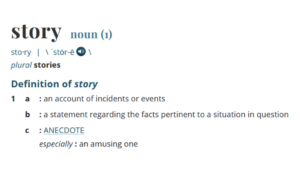New salespeople seem to spend the majority of their training around learning the features and functions of their product. This makes sense – after all, they need to know what they’re expected to sell.
In addition to actual salespeople, websites are also in that early sales role providing product information to potential clients. All to frequently, the information being presented here hasn’t changed from a dump of features and functions.
So why is this an issue?
It seems as if the goal for these organizations is to provide you a list of capabilities and (sometimes) why these things should be important to you. The expectation is that you already know what you want and why you want it. They just want to match as many of your requirements so as to be selected. It sounds practical, if not very impersonal.
This approach puts a heavy burden on your potential client. It requires them to interpret your information, align it to their needs (assuming they truly understand them), and make a determination if what you’re offering will solve whatever problem they are trying to address.
That’s a lot to ask of someone who doesn’t know you – and you don’t know them.
We’ve written in the past that business is personal – and business relationships are harder than ever to establish. It’s our opinion that even if we don’t actually know each other, a sales transaction is a commitment that needs to be trusted and honored. And in any relationship, trust begins with beginning to learn about and understand each other.
I think that sometimes the best way to start is with stories.

Stories have always been used to convey information and messages for as long as I can remember. Most of us grew up with stories from Aesop’s Fables, classic fairy tales, bible stories, family legends, and more. These were often used to teach us something in a way that was relatable to us to help us to absorb the information.
Why should business communications be any different?
For stories to work, there must be content that is interesting to the listener/reader. One of the keys to finding that interest is talking with someone with “listening ears,” or you can also research on them, their company and/or their industry to help you to frame the narrative. Making it about them and their story is the start.
Next, since you’re an expert on your product or services, match that information to their personal story in a way that doesn’t become an information dump – but instead a path to understanding your value. Your entire purpose at this point is to establish trust and maybe confidence that this new business relationship can keep growing.
Creating this story can’t happen if you don’t know them or your own products well enough. There are no shortcuts to building trust and understanding.
If you take the time and convert the information you’re trying to convey to a prospect or a customer into a meaningful story, you’ve gone a long way to building long-term relationships – and your business.
So how’s your storytelling?




